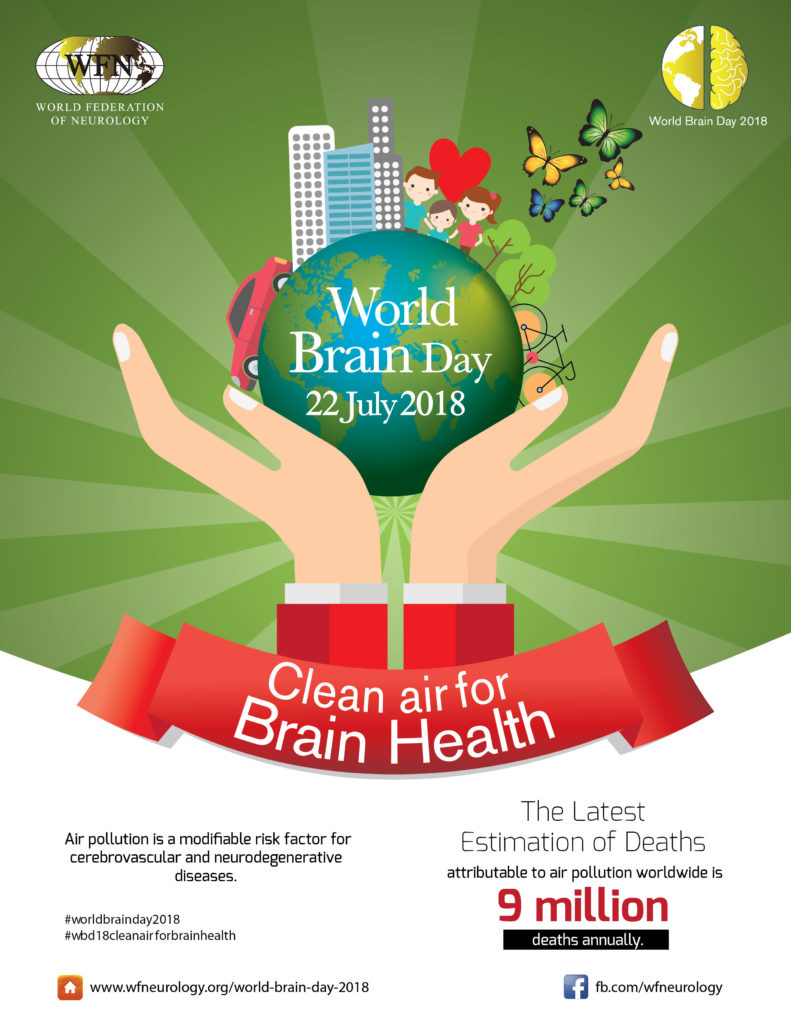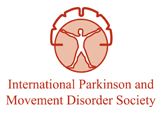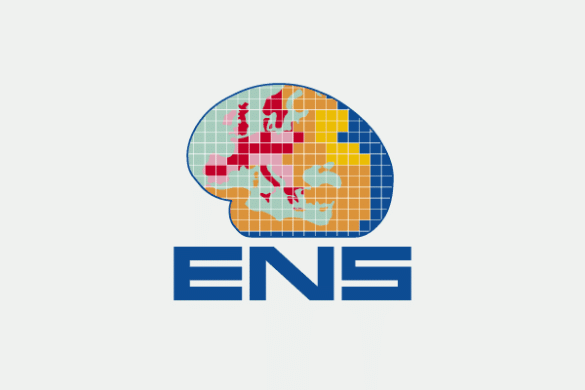WFN website: www.wfneurology.org
Adress for the WBD: wbd2018@wfneurology.org.
Clean air for brain health
Mohammad Wasay MD, FRCP, FAAN (Aga Khan University, Karachi, Pakistan)
Wolfgang Grisold MD (Secretary General, WFN, Vienna, Austria)
A link between environment and health has long been suggested but in last two to three decades the scientific community has been able to partially understand its mechanism, pathophysiology and impact especially for neurological diseases. There is good evidence for direct and indirect links between pollution and brain health, especially for stroke and possibly other neurodegenerative diseases. Estimated 9 million deaths related to air pollution every year have been reported.
There are three major issues related to this topic; evidence, awareness and interventions.
Evidence:
29% stroke was attributable to pollution according to Global burden of diseases study.(1) Evidence relating stroke and environment is robust. (2) The same is true for Alzheimer’s diseases and dementias. There is growing evidence linking environment to neurodegenerative diseases including dementias and Parkinson’s disease. (3)
Awareness:
Awareness relating pollution to lung diseases, heart diseases and gastrointestinal diseases is increasing but there is little awareness relating to neurological diseases to pollution even among global and local health care authorities. The same is true for media and global information. There is need for public general awareness as well as well as the neurology community as global challenge.
Interventions:
World Brain Day (WBD) is a regular yearly activity of the World Federation of Neurology for improving awareness and advocacy related to neurological diseases. It is the 22n July every year.
The theme changes every year (2017; stroke, 2016; aging population, 2015; epilepsy). This year (2018) the WBD theme is “Clean air for brain health”.
The WFN with its 120 delegates plans hundreds of activities across globe including seminars, media briefings, camps, walks, round tables and other media activities. Thousands of newspaper items and electronic media sound bites are produced and aired in multiple languages. Hundreds of thousands of social media posts involving Facebook, web sites and twitter using our banner ads are produced and posted.
Our major focus is the young generation and the key message is to protect the brain from pollution advocate for a healthy brain and healthy life style. In this regard, WFN is not only working with the global neurology community but it is also working with environment experts affiliated with various organizations throughout world especially Europe and North America.
This common agenda item is likely to advance collaboration between the neurology community and environmental experts for further research, awareness and advocacy.
How to participate?
We invite all neurologists, neuroscientists, trainees, technologists, environment experts and activists to become part of this world brain day campaign. You can participate by just posting our banner ad on your page sharing our posts, messages and videos to your friends and colleagues. You can partner with local neurology societies and organizations for participation and promotion of these activities.
References:
- Feigin VL, Roth GA, Nathavi M et al. Global Burden of stroke and risk factors in 188 countries, during 1990-2013: a systematic analysis for the Global Burden of Disease Study 2013. Lancet Neurol 2016 ; 15 : 913-924
- Wasay M, Khoja A. Environment and Neurological diseases; growing evidence for direct relationship. JCPSP 2018 Volume 28(5); 337-338
- Maria Khan, Mohammad Wasay. Environment, pollution and stroke (editorial) JPMA (in press)












